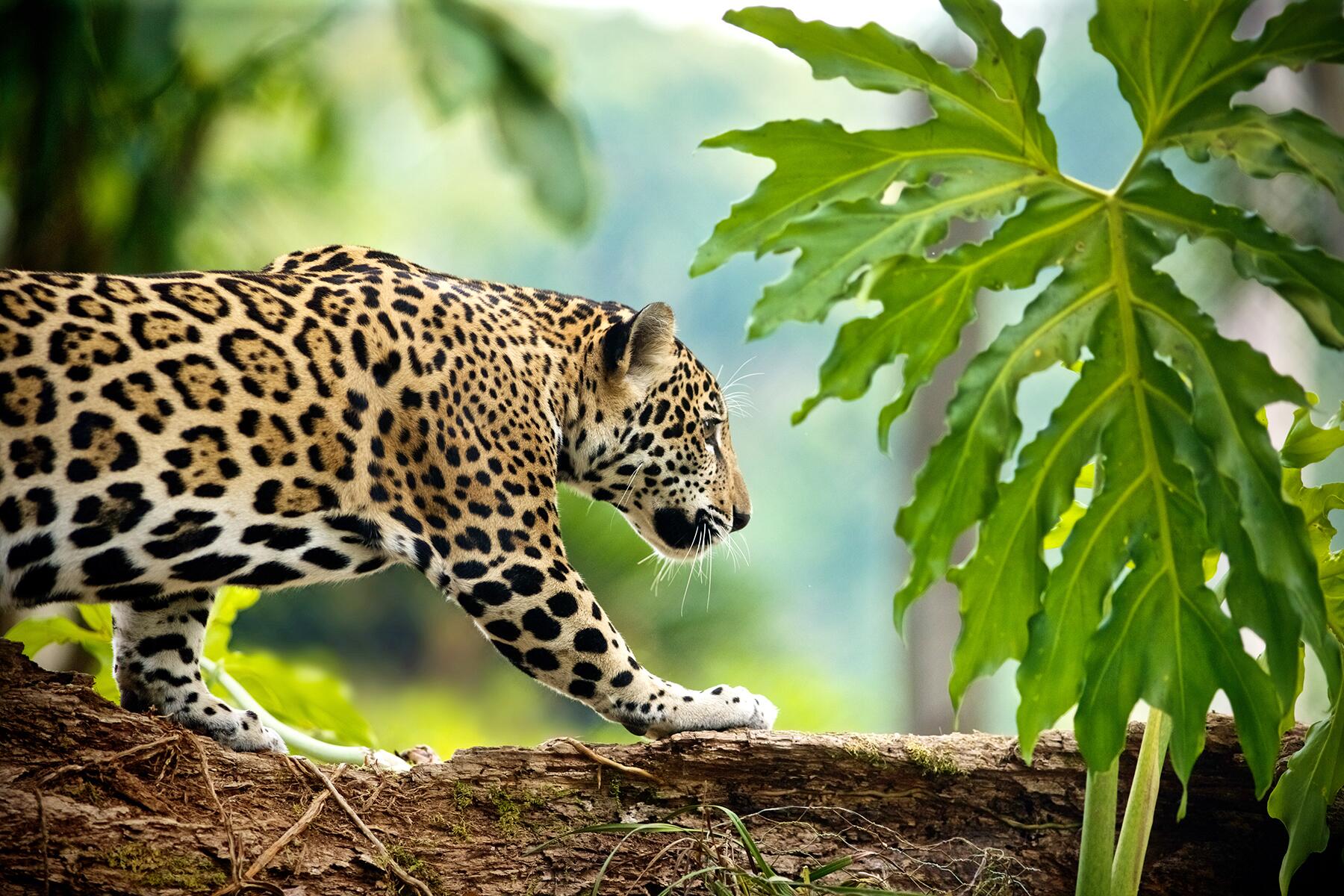- ⁄
- Travel News
- ⁄
- Outdoors
From the teeniest meows to the mightiest roars.
Since ancient times, humans have been fascinated by the members of the felidae family. They are often symbols of grace, strength, and royalty. Their predilection for hunting by night makes them mysterious. They can be spotted or striped. Small or large. But what they all have in common (for some reason) is that they love sitting in boxes. Here are 10 wild cats that you can’t have as pets but can admire from afar.
Black Footed Cat
WHERE: Southern Africa
The black footed cat is a great example of why you shouldn’t judge a book by its cover. Despite being Africa’s smallest wild cat (adults only weigh about 2 to 5 pounds) they’re also the continent’s deadliest. According to Discover Wildlife, the black footed cat’s success rate during a hunt is 60% and can get 10 to 14 kills under their tiny belts in a single night. A legend even says that they can pierce the jugular of a giraffe. And while this particular myth probably only illustrates their remarkable ferocity, you probably wouldn’t want to put them to the test either.
Pallas’s Cat
WHERE: Central Asia
While Pallas’s cat (also called “manul” in Kyrgz or “manol” in Mongolian) is roughly the size of a large domestic cat, you’re unlikely to confuse the two. Pallas’s cats are much more stoutly built, have exceptionally long, dense fur (which, of course, makes them look even bigger). They also have wide-set round ears that inspired their scientific name Otocolobus manul or “ugly eared” (which seems a little unfair, isn’t beauty in the eye of the beholder?). Their stout legs mean they won’t be winning any races so they rely instead on ambush tactics when pursuing their prey across the Central Asian steppes where they tend to be found. They primarily hunt rodents like gerbils or voles so if you encounter them no need to worry (but just to be safe, maybe don’t call their ears ugly).
Recommended Fodor’s Video
Scottish Wildcat
WHERE: East Scotland
If you were to encounter the Scottish wild cat (also known as the Kellas cat) out in the countryside there’s a very good chance you’d write it off as a common house cat. Albeit, a rather large and stout house cat. While there was a time when they were found all over Britain, their numbers have dwindled to approximately 400 cats due to habitat loss as well as breeding with the aforementioned domestic cats. So if you do encounter one while in the north or western parts of Scotland, you should honestly consider yourself lucky to have met one of these delightfully robust felines.
Bobcat
WHERE: North America
This cousin of the lynx lives throughout North America and gets its name from its “bobbed” tail. Despite their ubiquity, they’re most active around dawn and dusk and so humans hardly ever glimpse these cats. However, there is at least one remarkable instance of human-bobcat interaction. Researchers excavating an archaeological site in Illinois discovered the bones of a bobcat kitten. The fact that the cat was buried on the edge of a funerary site for people, along with the fact that it had been carefully buried wearing a necklace made out of bear teeth and shells, lead researchers to believe that the bobcat was a tame pet.
Leopard
WHERE: Asia and Africa
Leopards are known for their grace and the variety of habitats they’re found in throughout Asia and Africa. And while they’ve been known to call everywhere from sub-Saharan Africa to Russia to Nepal to Myanmar home, their population across the world has been fragmented due to habitat loss. And while leopards don’t typically attack humans they have been known to clash with humans as these cats will sometimes prey on livestock.
Cheetah
WHERE: Africa
Their legendary speed and their ability to dexterously take down an antelope would make the cheetah an intimidating sight to encounter—especially if you’re not expecting it. But these wild cats are incredibly docile and there are no known instances of a cheetah attacking a human in the wild. In fact, there is a long history of cheetahs being tamed by humans that goes back thousands of years. But while they may have made good pets for Egyptian pharaohs they have never been truly domesticated, so don’t go picking out any cat towers just yet.
Jaguar
WHERE: South and Central America
It’s easy to see why the jaguar features so prominently in pre-Colombian cultures. They’re remarkably powerful with jaws strong enough to break through the bones of their prey. And there are few animals in the jaguar’s territory that don’t fall under the category of “prey.” They’re known to hunt capybaras, deer, and wild boars. While other cats are water averse, jaguars are incredibly good swimmers and will take to the water to dine on frogs and caimans. Despite the way they exemplify the moniker of “apex predator,” attacks on humans are very rare since we don’t register as recognizable prey.
Mountain Lion
WHERE: The Americas
Also known as pumas and cougars, mountain lions are found throughout both South and North America. So whether you’re in the Canadian wilderness or the far reaches of the Andes, you could be walking in a mountain lion’s backyard. And while they’re powerful and fairly large (males can weigh about 200 pounds) they’re not technically big cats because they cannot roar, instead emitting a high pitched yowl.
Lion
WHERE: Sub-Saharan Africa
Though it’s known as the “king of the jungle,” the title is a bit of a misnomer. More than a bit, actually. Though they can live in rainforests, today they only live in the grasslands of sub-Saharan Africa. But this wasn’t always the case. There are accounts of lions living in parts of Europe up until 100 AD and in Asia (except for a small population in India) up until the mid-20th-century. Lions are unique in that they’re not solitary like other cats, living instead in prides which can include as many as 40 lions.
Tiger
WHERE: Asia
With males clocking in at 600 pounds, the tiger is the largest cat in the world. Their size and strength coupled with their striking beauty have made them symbols of power. While they were once found throughout Asia, hunting and habitat loss have threatened their population. Now there are believed to be only about three to four thousand tigers left in the wild.




